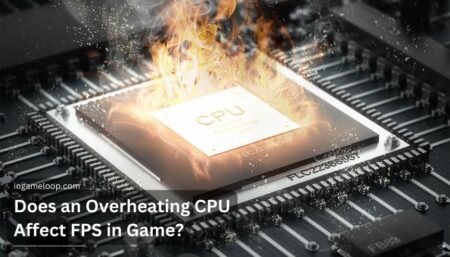![What CPUs are Compatible with my Motherboard? [2024]](https://www.ingameloop.com/wp-content/uploads/What-CPUs-are-compaitble-with-my-Motherboard.jpg)
If you’ve decided to build your personal computer, you must check a bunch of factors to effectively meet the expectations. One factor out of several includes the compatibility between different PC components, and the CPU and Motherboard are the most important ones. In addition, selecting the correct type of processor is one of the most crucial aspects since it supervises the overall rig’s performance. Building your computer system can be a fun, rewarding, and cost-effective activity that you haven’t experienced before.
At the same time, it can be perplexing and overwhelming for some. After all, considering how much a brand-new rig costs, no one wants to ruin it. The main concern for new builders is PC component compatibility. With a bit of research, compatibility can be met. Anyone building a PC for the first time must always look into CPU and motherboard compatibility first. So let’s see what CPUs are compatible with my Motherboard through this post. This post discusses several factors like sockets, socket models, chipsets, and more.
Key Takeaways
- The CPU is the central processing unit of the computer, which performs calculations and instructions for various programs and processes.
- The motherboard is the main circuit board of the computer, which connects and communicates with all the other components, including the CPU.
- The CPU and the motherboard have to be compatible with each other, meaning they have to share the same socket type, chipset, and power requirements.
- The socket type is the physical shape and layout of the pins or contacts on the CPU and the motherboard, which have to match exactly for the CPU to fit and work.
- The chipset is the set of integrated circuits on the motherboard, which control the data flow and functionality of the CPU and other components.
- What CPUs are Compatible With my Motherboard?
- What exactly is the CPU socket?
- Surface Mounting Techniques
- LGA: Land Grid Array
- PGA: Pin Grid Array
- BGA: Ball Grid Array
- What is the socket model?
- Compatibility via Motherboard Chipset
- Working out which CPU will work with my motherboard
- Conclusion
- Frequently Asked Questions
What CPUs are Compatible With my Motherboard?
Suppose you have a motherboard you took from your older or recently purchased one since you’re building a new system. Now, it’s time to buy a compatible CPU to fit on it so you can play your favorite games or create content to keep refreshing your online presence. Well, in such a case, you have focused your entire attention on the compatibility aspect between the processor and Motherboard before purchasing the CPU. But again, how do we figure out whether the board will accommodate what type of chip?
You can quickly uncover a compatible CPU by looking at two factors:
- CPU socket
- Motherboard chipset
Frankly speaking, it may be confusing for a beginner to check these factors without the help of some experts. Therefore, we will discuss both aspects in detail in the following section of this post. Stay with us until the end since we will give you the most straightforward rules to know more about your query. Let’s explore every critical aspect!
What exactly is the CPU socket?
As the name implies, a CPU socket is a physical mount given on the Motherboard on which the processor is installed. It provides the necessary mechanical and physical dimensions and the pin layout to facilitate CPU connectivity with the Motherboard. Simply put, it is the location of the CPU on the Motherboard. If your CPU is incompatible with the socket, it will certainly not fit in the mount, so it will not work.

To ensure that your Motherboard is compatible, check what socket and chipset your processor supports. The socket is the physical slot on the Motherboard that houses your processor. It should be simple to figure out by looking up the socket size for both the processor and Motherboard you intend to use. You can damage the processor and/or Motherboard if you try to pair it with the wrong socket type.
Surface Mounting Techniques
To fully understand different socket types and socket compatibility, we first have to look at the different surface mounting techniques. Well, a surface mounting technique or SMT is the way or structure that is used to create or manufacture the CPU socket. Each manufacturer could use a different type of circuitry to build up the physical socket mount, so there are different sockets and socket models. Essentially, there are three types of mounting methods for CPUs:
- LGA: Land Grid Array
- PGA: Pin Grid Array
- BGA: Ball Grid Array
LGA: Land Grid Array
A land grid array (LGA) is a printed circuit board design with a square grid of contacts connected to other components. The term refers to a “socket design,” in which certain elements are separated from the actual circuit board and integrated into the board’s structure in novel ways. Unlike most other designs, LGA configurations have pins in the socket rather than on the chip.
PGA: Pin Grid Array
The integrated circuit packaging standard used in most second through fifth-generation processors is a pin grid array (PGA). The rectangular or square pin grid array packages had pins arranged in a regular array. A pin grid array was preferred over dual in-line pins for processors with larger data buses because it could better handle the required number of connections.
BGA: Ball Grid Array
Ball Grid Array is abbreviated as BGA. This is an array of small-sized / tiny metallic conductor balls arranged in a harmonious form on the board that we use to make a PCB in its most basic form. These balls will eventually be used to make connections using minor and precise soldering while assembling microprocessors and integrated circuits to complete the circuit we intend to build.
What is the socket model?
As I mentioned earlier, several methods exist to build the CPU socket, so several CPU sockets are there with different motherboards. To determine whether your CPU is compatible with your Motherboard, select the socket model first. Specific socket requirements for each CPU can be found in their specifications. Like, the LGA1200 socket is required by the latest Intel 10th and 11th Gen desktop CPUs, while the AMD Ryzen 1000, 2000, 3000, 4000, and 5000 series desktop processors require the AM4 socket.
When you look up a particular motherboard’s specifications, you will notice that it doesn’t include all of the supported CPU models. They will instead only mention the CPU socket they have. You can use this socket information to find which CPU models the Motherboard will support. The Motherboard’s socket is also significant for the chipset. The chipset controls many aspects of the Motherboard, including the socket. After ensuring the CPU is compatible with the board’s CPU socket, it’s time to look at the motherboard chipset.
Compatibility via Motherboard Chipset
While the socket is the most crucial consideration when determining CPU and motherboard compatibility, the motherboard chipset is also essential. It is because, in most cases, the socket remains consistent across chipset generations. It may cause some compatibility issues, which can usually be resolved by updating the BIOS. Still, there could be several chipsets compatible with the same socket. For example, the AMD B350, AMD B450, and the newer AMD B550 motherboard chipsets all use the AM4 socket.
The AMD B550 was released in June 2020, a few months before AMD’s Ryzen 5000 series CPUs. As a result, the B550 motherboards can quickly run AMD Ryzen 5000 series CPUs without needing a BIOS update. Despite having the supported socket, the older B350 Motherboard would not be able to run the 5000 series processor by default. Instead, a BIOS update will be required. In short, you have to consider all these factors while deciding the compatibility between a specific chipset and Motherboard to keep everything flowing well.
Working out which CPU will work with my motherboard
In the end, after knowing all the compatibility-related factors, chipset and socket, you have to choose a suitable processor for your PC. Aside from the chipset and socket, many other parts have a more comprehensive range of suitability than a processor. Unless you’re dealing with very old models, this factor often becomes the driving force behind your entire build. In general, there are two main processor lines to choose from when building a gaming or content creation PC: AMD’s Ryzen and Intel’s Core.
To make everything easier, you must go for the latest processors in both of the families. For the foreseeable future, the Ryzen line has been made fully forward and backward-compatible (and it only started in 2017, so you shouldn’t have to worry about that changing anytime soon). It is also true for the latest Ryzen 5000 series processors, which have a wide range of support from the X570 and B550 chipsets, with more than 400 series support. In contrast, Intel’s 11th and 12th generation processors are also excellent.
Conclusion
There are mainly two aspects related to the CPU and Motherboard to help us know what CPUs are compatible with my Motherboard. You have to check the CPU sockets and chipsets given on the Motherboard. Sockets are also shared among different generations of motherboard chipsets. So it’s generally a good idea to keep the chipsets in check so that you might have maximum performance. If you plan to use a CPU from the latest generation, we recommend getting the latest motherboard chipset series together with the processor.
Frequently Asked Questions
Is there any CPU socket adaptor?
The short answer to this question is no. Creating such an adaptor isn’t possible due to a wide number of issues. Still, several manufacturers tried to build such an adaptive solution a decade ago, but these were so expensive that you could purchase a new motherboard.
How do I know if my Motherboard is compatible?
First of all, you have to start by checking the compatibility between the Motherboard and CPU by looking at the CPU socket and chipset given on the Motherboard. After that, ensure to check the overall size-wise and speed-wise RAM compatibility.
Are all CPUs compatible with all motherboards?
The short answer is no. All the CPUs can’t be paired with all the motherboards or even a single motherboard due to several compatibility issues. The reason is that the Motherboard comes with a particular chipset and a specific socket that can’t accommodate all CPUs.





![Is an Intel Celeron Processor Good? [2024]](https://www.ingameloop.com/wp-content/uploads/Is-an-Intel-Celeron-Processor-Good-450x257.jpg)
